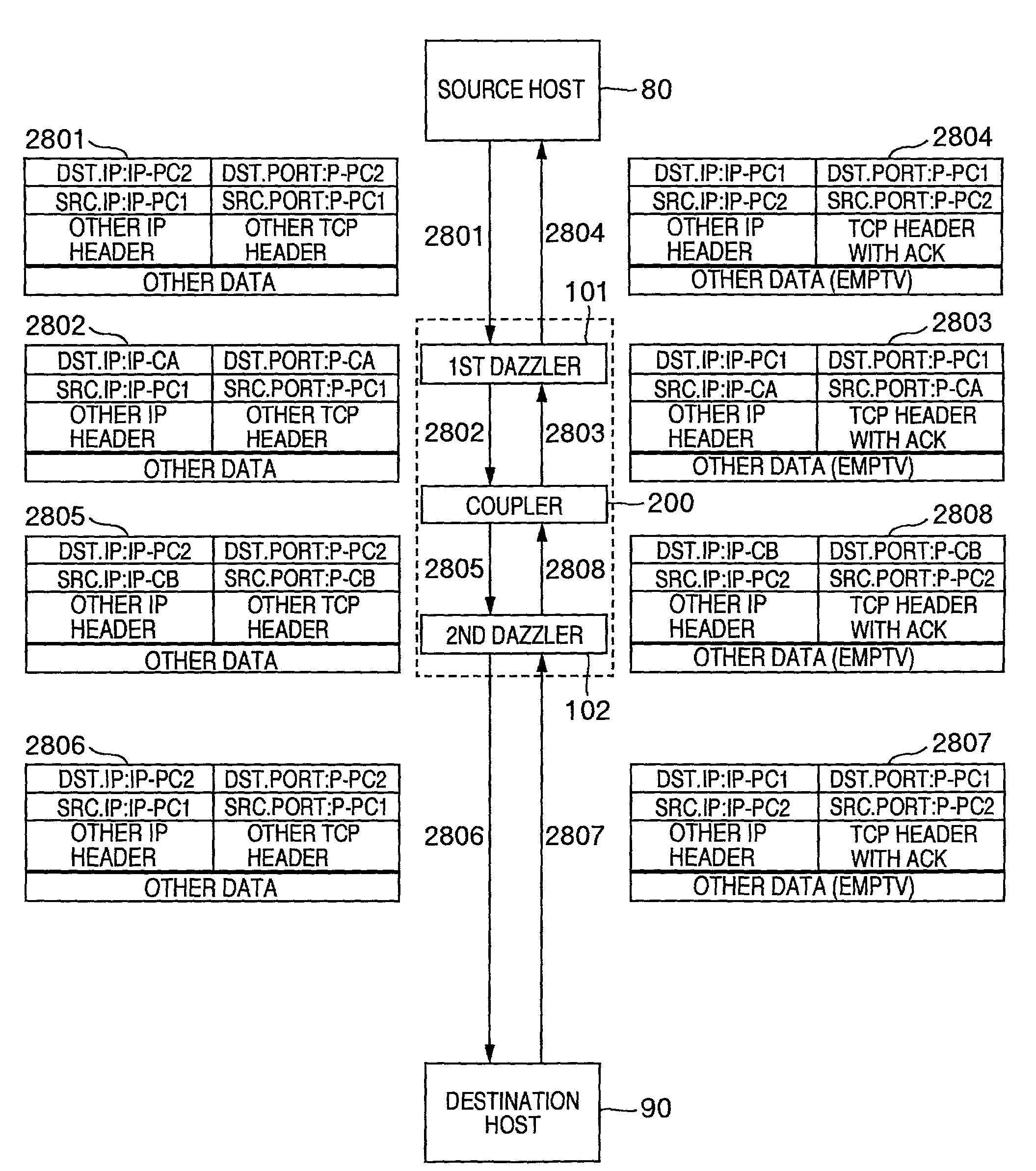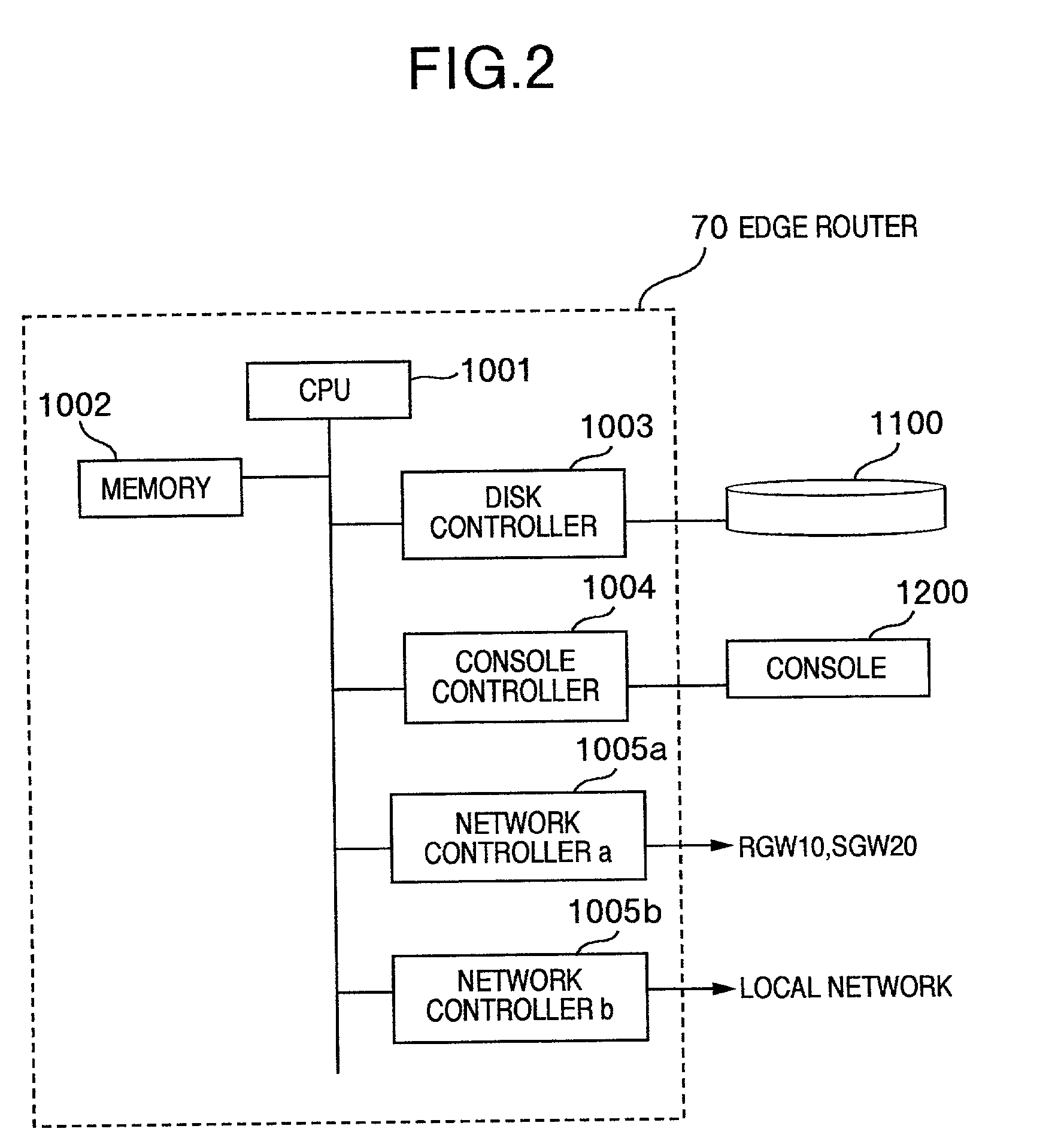Performance enhanced TCP communication system
a communication system and high-speed technology, applied in the field of high-speed communication systems, can solve the problems of inefficient utilization of bandwidth, large time interval between the transmission of data by the sender host and its receipt of the acknowledgement, etc., and achieve the effect of reducing the effect of delay and extending the delay
- Summary
- Abstract
- Description
- Claims
- Application Information
AI Technical Summary
Benefits of technology
Problems solved by technology
Method used
Image
Examples
second embodiment
[0077]FIG. 12 shows the communication system of the invention and FIG. 13 shows the attributes of the TCP packets that are sent using the system.
[0078]In this embodiment an edge router 70 is provided between a source host 80 and a destination host 90. The edge router 70 includes a first dazzler 101, a coupler 200, and a second dazzler 102.
[0079]Firstly, the source host 80 sends a TCP packet (the source address of which is the address of the source host 80, and the destination address is the address of the destination host 90) to the edge router 70 (step 2801). In FIG. 13, IP-PC1 and P-PC1 are the IP address and port number of the source host 80, and IP-PC2 and P-PC2 are the IP address and port number of the destination host 90.
[0080]The edge router 70 receives the TCP packet, which is accepted by the first dazzler 101. The first dazzler 101 conducts address translation according to translation rules which are registered in an address translation information table 1500 in advance. Mo...
first embodiment
[0096]FIG. 15 shows communication architecture of the
[0097]As shown in FIG. 15, in the first edge router 70d, the dazzler conducts address translation of TCP packets from the source host 80 at the data link, in physical layer. The translated TCP packet is sent to the transport layer, and the TCP connection is terminated at this layer.
[0098]The coupler of the first edge router 70d is coupled to the coupler of the second edge router 70e via a connection according to any protocol. In this case, this connection is a TCP connection.
[0099]The coupler of the second edge router 70e is coupled to the destination host by a TCP connection. The dazzler of the second edge router conducts address translation of packets and forwards the TCP packets to the destination host 90.
[0100]In this case, 3 TCP connections “the source host 80—the 1st edge router 70d”, “the 1st edge router 70d—the 2nd edge router 70e”, and “the 2nd edge router 70e—the destination host 90” are established.
[0101]FIG. 16 shows t...
PUM
 Login to View More
Login to View More Abstract
Description
Claims
Application Information
 Login to View More
Login to View More - R&D
- Intellectual Property
- Life Sciences
- Materials
- Tech Scout
- Unparalleled Data Quality
- Higher Quality Content
- 60% Fewer Hallucinations
Browse by: Latest US Patents, China's latest patents, Technical Efficacy Thesaurus, Application Domain, Technology Topic, Popular Technical Reports.
© 2025 PatSnap. All rights reserved.Legal|Privacy policy|Modern Slavery Act Transparency Statement|Sitemap|About US| Contact US: help@patsnap.com



